Arlen Bellotti
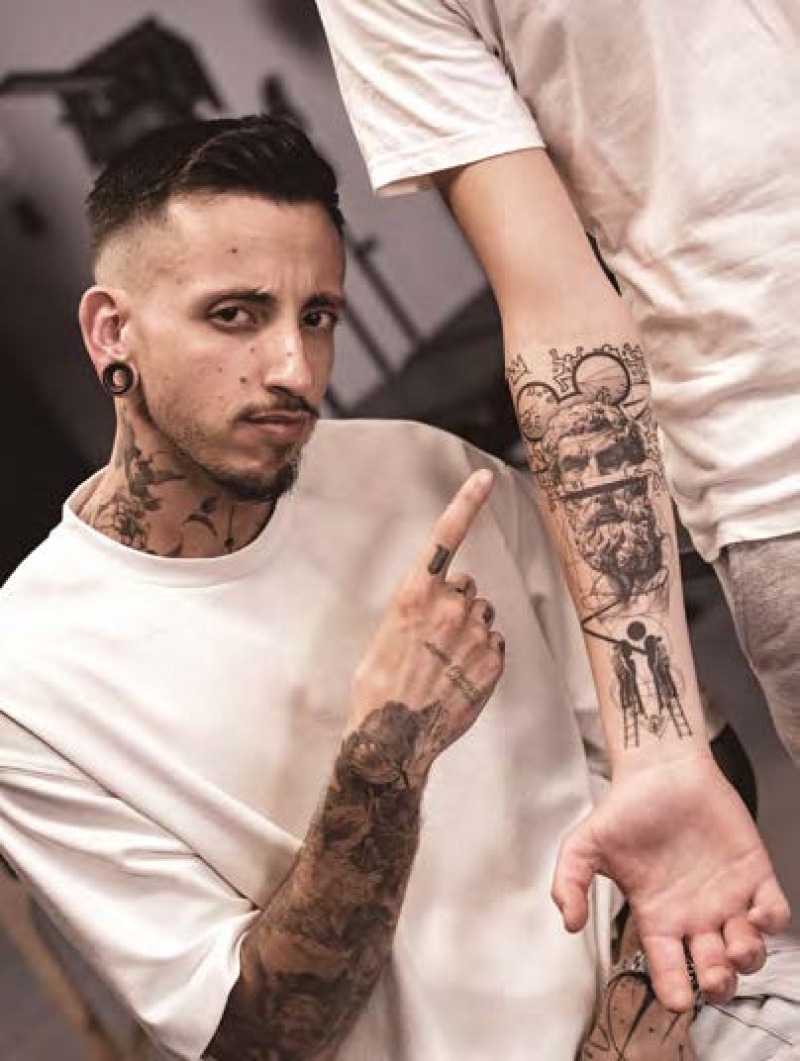
Arlen Bellotti è un tatuatore di origini maltesi che fonde micro-realismo, linee sottili e geometria sacra in opere d'arte indelebili / Arlen is a maltese tattoo artist who combines micro-realism, fine lines and sacred geometry to create indelible works of art.
Il percorso artistico di Arlen è stato indubbiamente influenzato dalle tradizioni culturali maltesi e dalla sua formazione artistica. Un percorso che oggi gli permette di tradurre le emozioni dei clienti in tatuaggi unici e significativi.
Maltese cultural traditions and his artistic training have undoubtedly influenced Arlen's artistic journey. A journey that today allows him to translate the emotions of his clients into unique and meaningful tattoos.
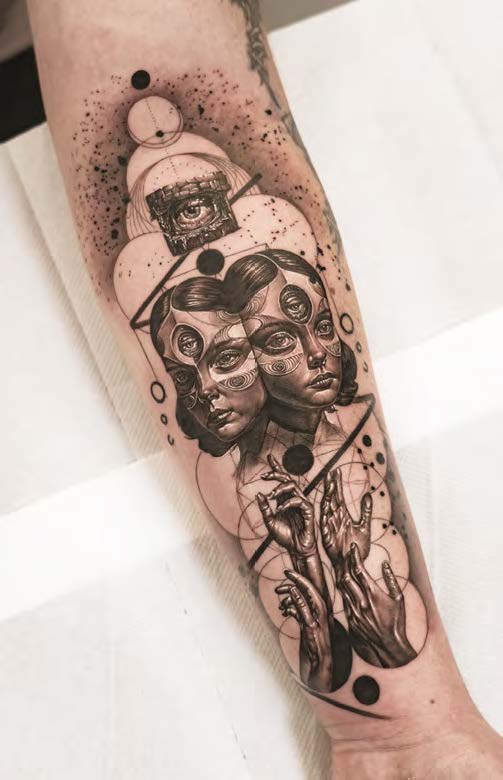
Qual è stato il tuo percorso e cosa ti ha fatto capire che il tatuaggio sarebbe diventato la tua passione principale?
Direi che l'arte ha scelto me. Sono sempre stato affascinato da tutto, dai colori vibranti dei cartoni animati alle voci profonde ed emotive della musica. Mi sono sempre sentito in sintonia con l’arte, come se un potere superiore cercasse la mia attenzione. A scuola ero diverso da tutti, ricordo che a nessuno piaceva scrivere saggi, mentre io potevo stare seduto per ore a fantasticare e a creare storie. Quando avevo circa 7 anni, la mia insegnante di inglese disse a mia madre: "Suo figlio è un poeta". L'arte è un modo di vivere piuttosto che un mestiere, è una visione del mondo e di sé stessi. È la comprensione del corpo, del cervello umano e del modo in cui vediamo tutto nel mondo. Ho sempre aspettato con ansia che il programma Miami Ink venisse trasmesso in TV una volta alla settimana: era la mia isola felice. Quello che sembrava impossibile ora è diventato possibile. Sebbene avessi sempre avuto un'attrazione per il tatuaggio, non capivo se sarebbe stato la mia passione. Ma ora ho notato che il mio interesse principale era l'espressione e l'emozione. L'arte è stata il mio modo di esprimere i miei sentimenti in modo naturale, dove le parole non arrivavano, volevo dare questa parte di me alle persone perché provassero la stessa cosa. Il tatuaggio è solo un mezzo di espressione che può essere conservato in eterno, quindi credo di aver scoperto che il tatuaggio sarebbe stato la mia passione quando ho capito che potevo aiutare le persone a visualizzare ciò che i pensieri e le parole pronunciate erano ineffabili da conservare per sempre.
Could you describe the path from your earliest artistic interests to realizing that tattooing would become your central passion?
I would say art has chosen me. I have always been fascinated by everything from cartoon shows' vibrant colours to the music's deep emotional voices. I always felt connected to it, as if some higher power sought my attention. I was always different from everyone in school; I remember no one liked to write essays, while I could sit for hours fantasizing and creating storytelling. When I was around 7, my English teacher told my mum, ‘You have yourself a poet’. Art is a way of living rather than a craft; it’s a view of the world and oneself. It’s the understanding of the body, the human brain, and how we view everything. I’ve always waited for the show Miami Ink to come on TV once a week; it was my paradise. What something felt impossible has now become possible. Though I had an admirable attraction to it, I might not know if I realized tattooing would be my passion from a young age. Still, as I write this answer, I have noticed that my primary interest was expression and emotion. Art has been my way of expressing my feelings naturally, where words did not meet, and I wanted to give that part of me to people so they would feel the same accord. Tattooing is just a medium of expression that can be kept eternally; I guess I discovered that tattooing would be my passion when I understood I could help people visualize what thoughts and spoken words were ineffable to cherish forever.
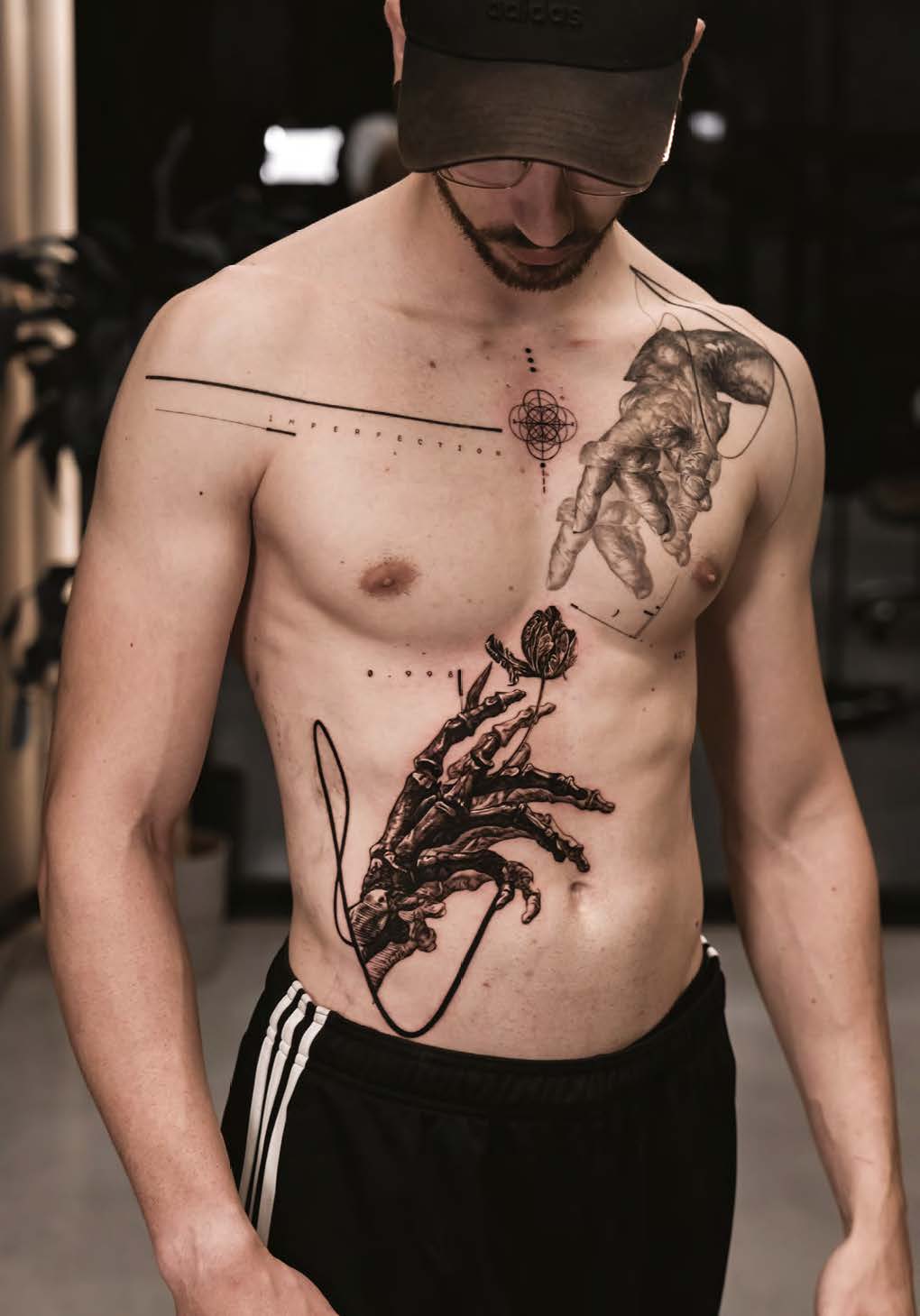
In che modo le tradizioni culturali maltesi, come "Il-Quccija", hanno contribuito a formare la tua identità di tatuatore, influenzando le tua prospettiva artistica attuale?
Il-Quccija è una tradizione molto diffusa a Malta, in cui i genitori del neonato pongono lontano da lui una serie di oggetti, come una matita, un pastello, un uovo, ecc., oggetti che definiranno la sua carriera futura. Stranamente, ho afferrato il mio primo pastello e da allora non ne ho mai avuto abbastanza. Venendo da una famiglia povera, i miei compravamo fogli di carta singoli per 1 centesimo, ogni 10 centesimi che riuscivo a raccogliere dai miei nonni li usavo per comprare la carta e per disegnare. Mi mancano quei giorni! Andavo dagli scarabocchi astratti ai disegni di figure di wrestling e di personaggi dei cartoni animati. Era la mia via di fuga e lo è ancora oggi. Credo di essere stato programmato per creare.
How did Maltese cultural traditions, such as “Il-Quccija,” help shape your identity as a tattoo artist, influencing your early aspirations and ongoing artistic perspective?
Il-Quccija is a huge tradition in Malta where the parents of the newborn place several objects far away from the newborn, such as a pencil, a crayon, an egg, etc., which will define the career of his later life. Funnily enough, I grabbed my first crayon and never had enough of it. Coming from a poor family, we used to buy single paper sheets for 1 cents; every 10 cents I would’ve managed to collect from my grandparents, I would use to buy paper and just be, draw. I miss those days! From abstract doodles to figure drawings of wrestling and cartoon characters. It was my escape and still is today. I guess I’ve been programmed to create.
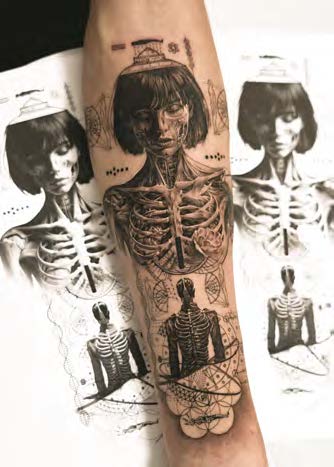
In che modo la tua formazione nelle belle arti ha influenzato il perfezionamento delle tue tecniche e del suo stile e come vedi queste basi accademiche riflesse nel tuo lavoro attuale?
La scuola è stata una parte importante nella mia curva di apprendimento. Ho iniziato con il disegno tecnico, sono sempre stato innamorato della precisione. Al liceo ero meno innamorato delle belle arti e più innamorato dei tecnicismi della geometria e delle prospettive. È buffo come rispondere a queste domande mi permetta di guardare indietro e di rendermi conto di come queste cose vengano applicate al mio lavoro attuale. È stato solo all'università che ho approfondito le mie aspirazioni, è diventata un'ossessione. Ho passato molti anni a imparare il graphic design e mi è piaciuto, l'importanza dei posizionamenti, dei pesi delle forme e dell'equilibrio nel design mi ha divertito. Come un movimento così piccolo possa alterare l'estetica complessiva. Il design grafico mi ha insegnato che qualsiasi mezzo può essere usato per facilitare un messaggio, come un logo, che può risuonare con gli interessi delle persone, evocare emozioni e fornire un'identità di brand. Più tardi, all'università, sono passato di nuovo alle belle arti e questo è stato il punto di svolta. Si differenziava dal disegno, dalla pittura, dalla cinematografia, dal suono e dalla narrazione. Ho dato il massimo nell'ultimo anno di scuola e sento di utilizzare ogni singolo argomento che ho esplorato nel mio lavoro attuale. Come potete vedere ci sono elementi di narrazione, design grafico e geometria. Il percorso scelto nei miei primi anni è la storia del lavoro che creo ora.
In what ways did your formal training in fine arts inform the refinement of your techniques and style, and how do you see these academic foundations reflected in your current work?
School has been a big part of my learning curve. It started with technical drawing; I was always in love with precision. I was less in love with fine arts back in secondary school and more in love with the technicalities of geometry and perspectives. It’s funny how answering these questions allows me to look back and realize how these are now being applied to my current work. It wasn’t until college that I furthered my aspirations; it became an obsession. I’ve spent many years learning graphic design and enjoyed it; the importance of placements, shape weights, and balance in design was amusing how such a small movement can alter the overall aesthetic. Graphic design taught me that any medium can facilitate a message, such as a logo, which can resonate with people’s interests, evoke emotions, and deliver a brand identity. Later in college, I switched to fine arts again, which was the turning point. It differed from drawing, painting, cinematography, sound, and story-telling. I’ve given my last year of school everything, and I feel like I use every subject I’ve explored there in my current work. As you can see, there are elements of storytelling, graphic design, and geometry. The path chosen in my earlier years is the story of the work I now create.
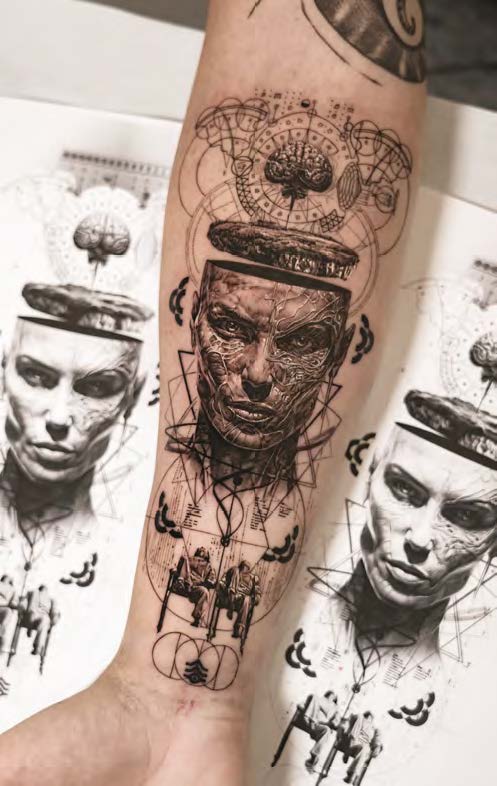
Per leggere l'intervista completa ad Arlen Bellotti, scaricate il numero 30 del magazine.
To read the full interview with Arlen Bellotti, download issue 30 of the magazine.